A quick photo review of the iPhone 16e, a budget model costing less than 100,000 yen including tax, and comparing its size and weight with previous iPhone SEs

Apple released
iPhone 16e - Apple (Japan)
https://www.apple.com/jp/iphone-16e/
The specs of the iPhone 16e are as follows:
| iPhone 16e | ||
| display | 6.1-inch Super Retina XDR display Resolution: 2532 x 1170 pixels | |
| ProMotion | ✕ | |
| Always on display | ✕ | |
| body | Glass back and aluminum | |
| size | Width 71.5mm x Height 146.7mm x Thickness 7.80mm | |
| weight | 167g | |
| On-board SoC | A18 6-core CPU 4-core GPU 16-core Neural Engine | |
| Apple Intelligence | ○ | |
| Rear camera | 48MP Fusion(2-in-1) Optical zoom: 1x/2x | |
| Secure Authentication | FaceID | |
| port | Supports USB-C and USB 2 | |
| Wireless charging | Qi Wireless Charging | |
| MagSafe Compatible | ✕ | |
| Dynamic Island | ✕ | |
| SOS via satellite | ○ | |
| Apple Pay | ○ | |
| Battery life | Video playback: Up to 26 hours Video playback (streaming) | |
The iPhone 16e box looks like this.
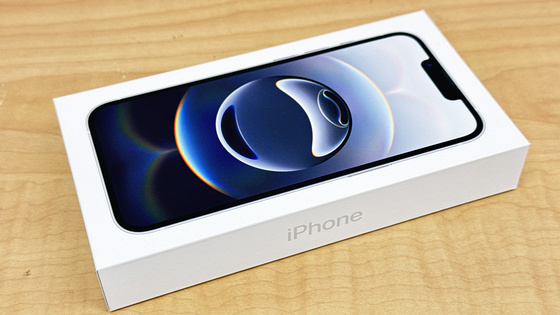
When you open the box, you'll see the iPhone 16e.
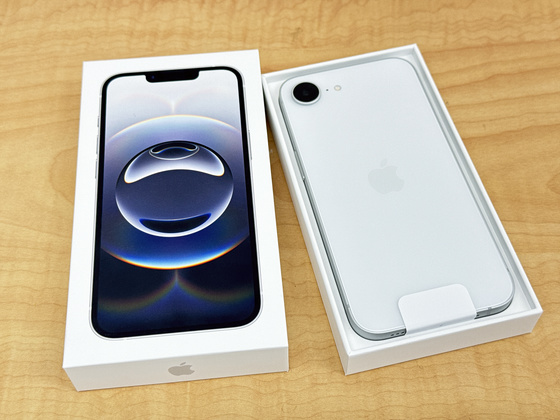
The contents are the iPhone 16e body, a USB-C charging cable (1m), and a SIM pin. The iPhone 16e comes in two colors, black and white, and this time I purchased the white 128GB model.

Peel off the protective sheet from the display.
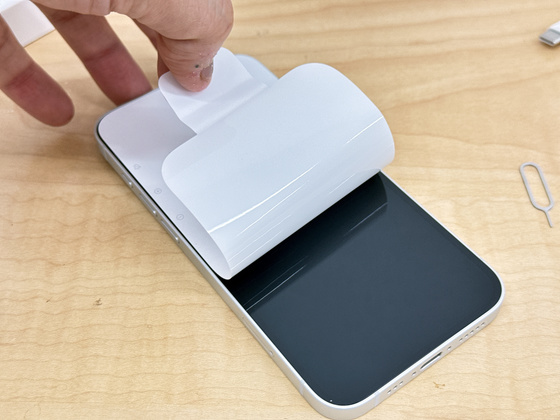
I turned it on and set it up. The dimensions of the device are 71.5mm wide x 146.7mm high x 7.80mm thick, and the display is a 6.1-inch diagonal Super Retina XDR display.
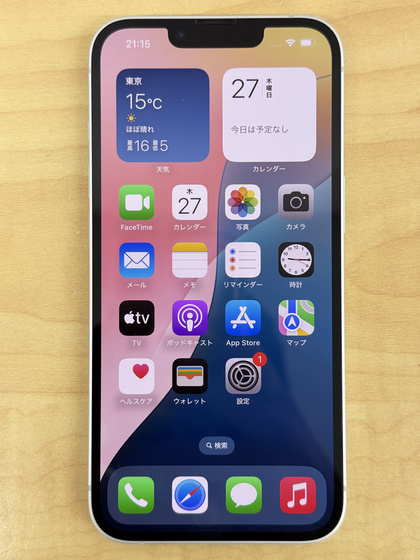
The area where the front camera and the TrueDepth camera used for Face ID are built in is not a Dynamic Island, but a notch.
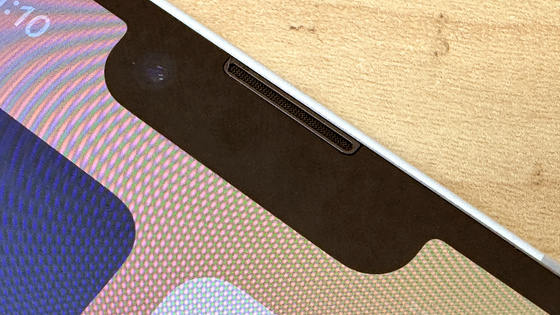
The bezel width surrounding the display on all four sides was approximately 2.5mm.
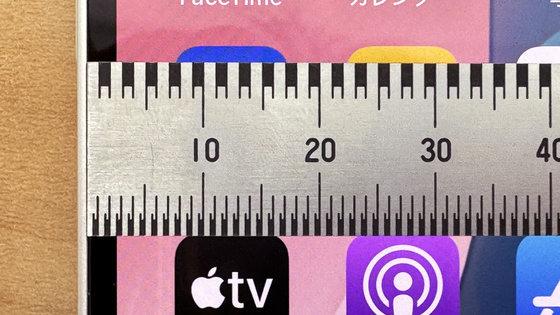
The back looks like this: There's only one camera, a 48-megapixel wide-angle camera.
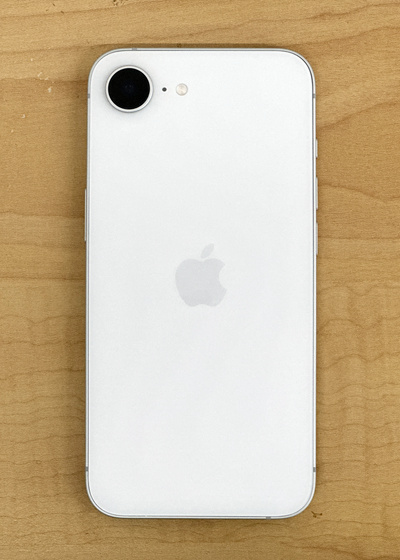
On the right side facing the back are the SIM tray, volume up/down buttons, and action button.
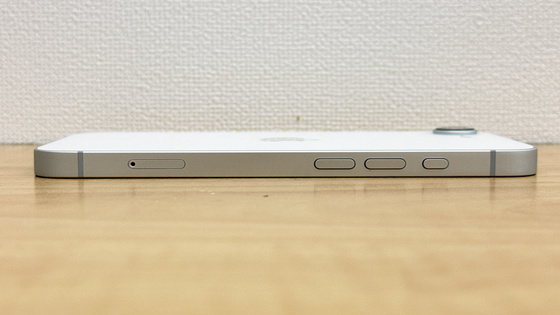
There are only side buttons on the left side.
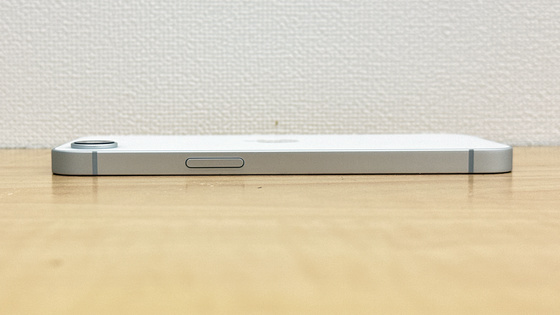
There was only a line on the top that looked like an antenna line.
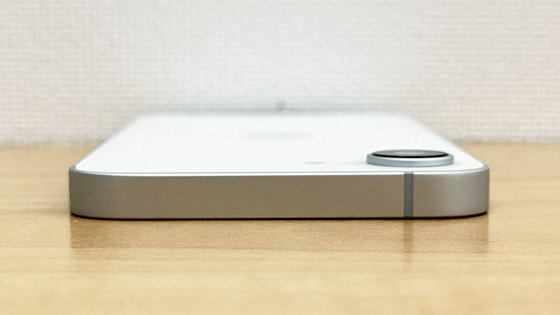
There are a total of eight speaker grilles on the bottom, with a USB-C port between them. The iPhone 16e's USB connection is said to be 'USB 2 compatible,' with a maximum data transfer speed of 480 Mbps.
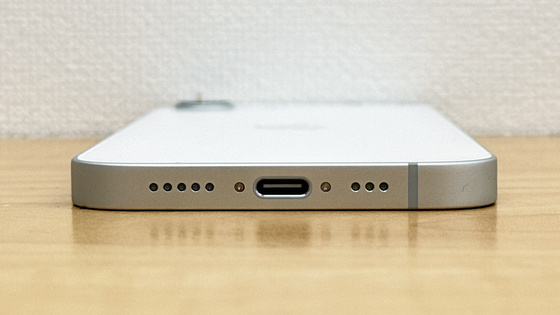
Here we lined up the iPhone SE with previous iPhone SE models. From the left, we have
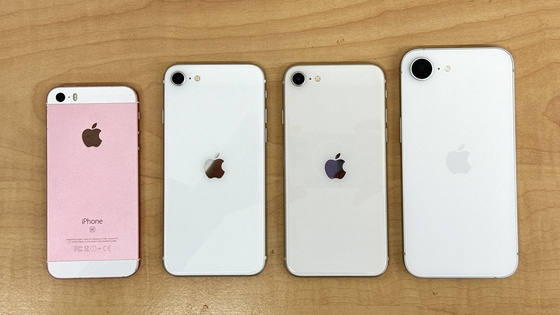
When lined up facing forward, the iPhone 16e does not have a home button with Touch ID built in.
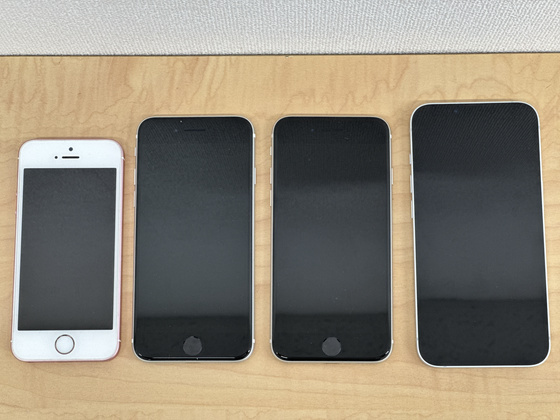
The iPhone SE (1st generation) is 7.6 mm thick, the iPhone SE (2nd generation) and iPhone SE (3rd generation) are 7.3 mm thick, and the iPhone 16e is 7.80 mm thick, making the iPhone 16e the thickest.

The iPhone SE (1st generation) weighs 113g.
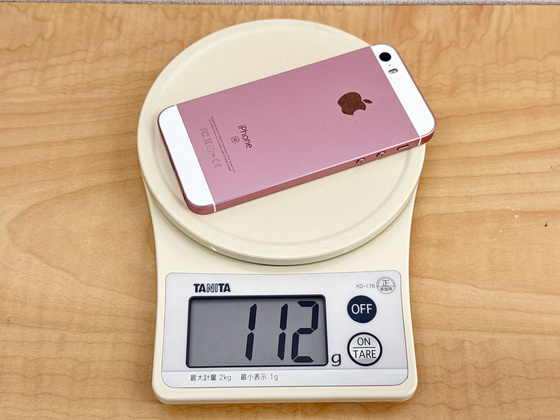
The iPhone SE (2nd generation) weighs 146g.
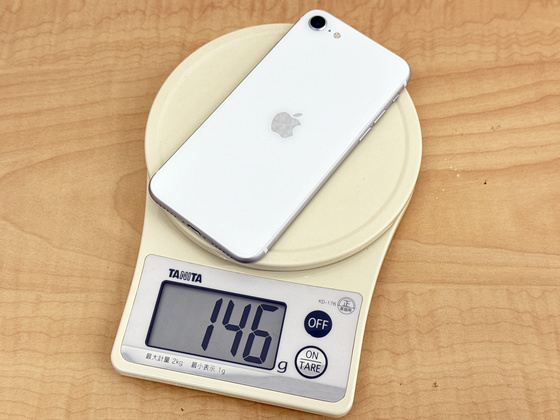
The iPhone SE (3rd generation) weighs 143g.
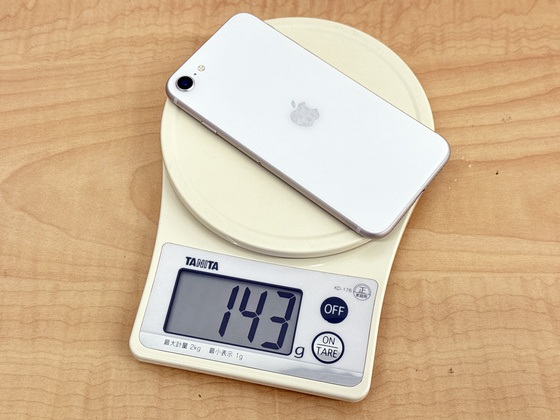
The iPhone 16e weighed 166g, which is about 20g heavier than the second and third generations.
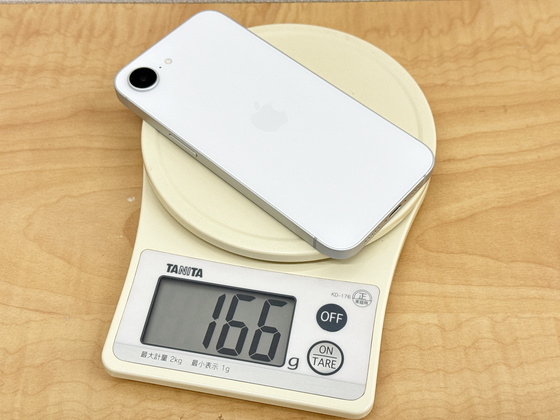
Even when you put Apple's original silicone case on the iPhone SE (3rd generation), the iPhone 16e looks a size larger.
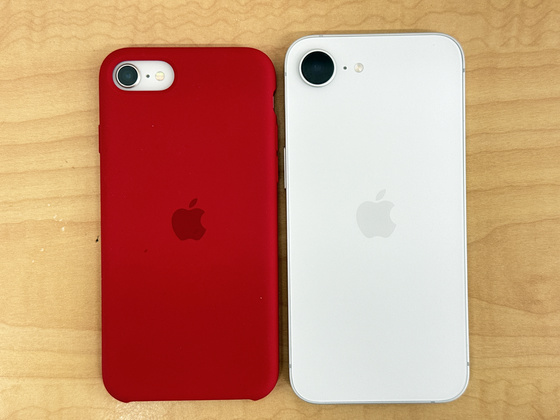
Because the silicone case is quite thick, when viewed from the side, the iPhone 16e without a case looks thinner than the iPhone SE (3rd generation) with a case.
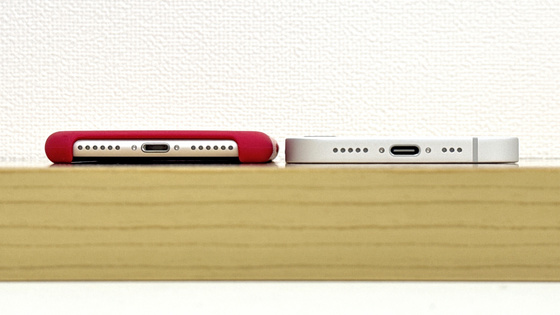
The iPhone 16e is available in three models, 128GB, 256GB, and 512GB, depending on the storage capacity. The body comes in two colors, white and black. The price is 99,800 yen (tax included) for the 128GB model, 114,800 yen (tax included) for the 256GB model, and 144,800 yen (tax included) for the 512GB model.
Continued
What power adapter is needed to charge the iPhone 16e? Check battery life, charging time and benchmark results - GIGAZINE

Related Posts:







